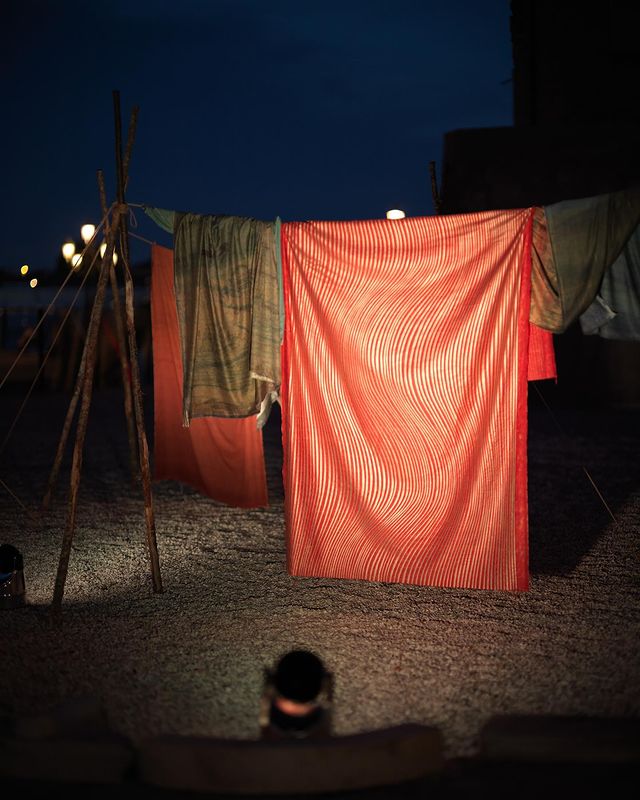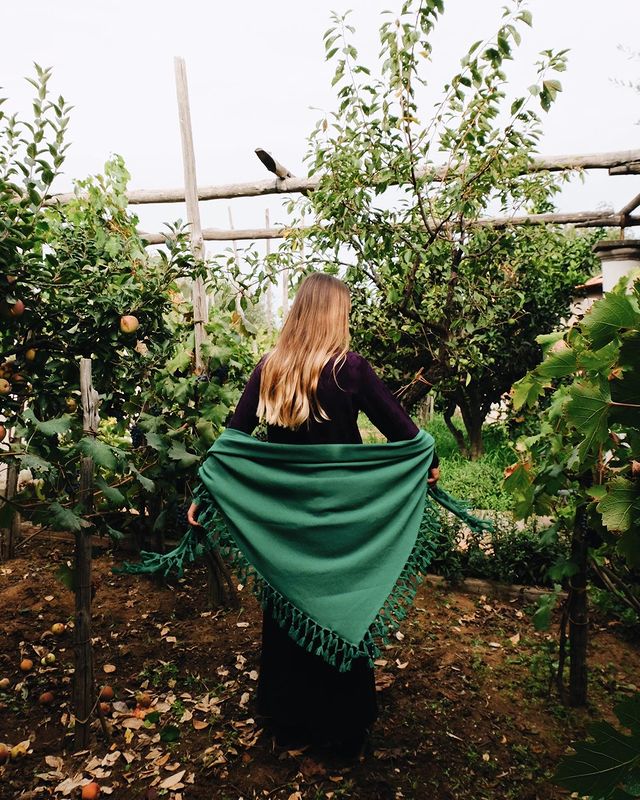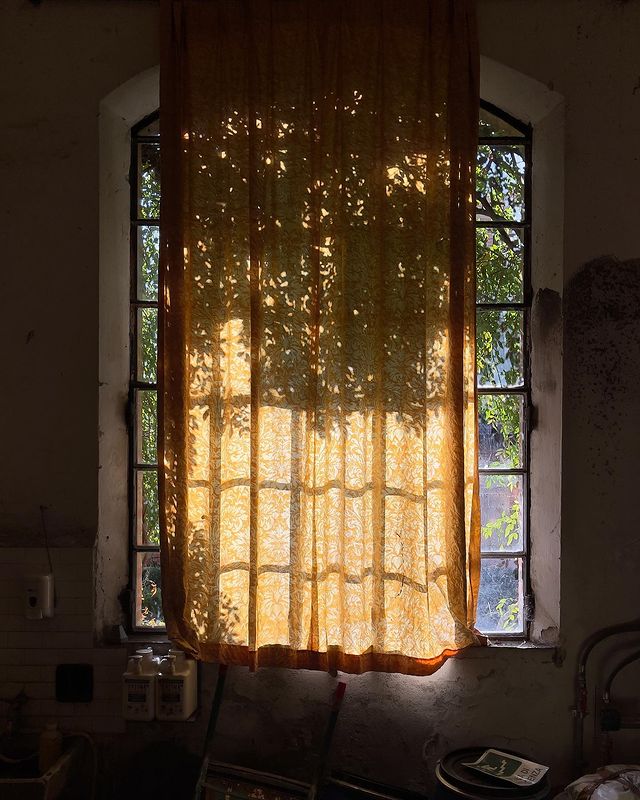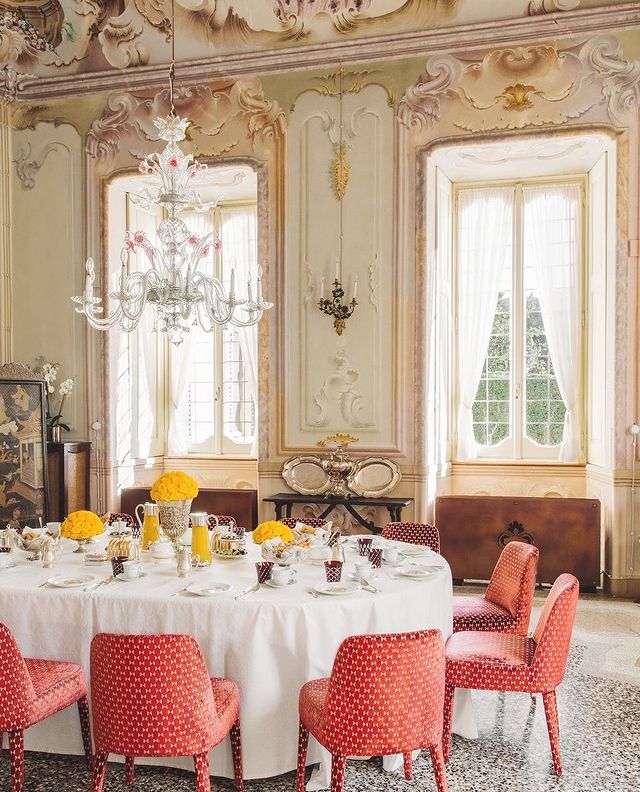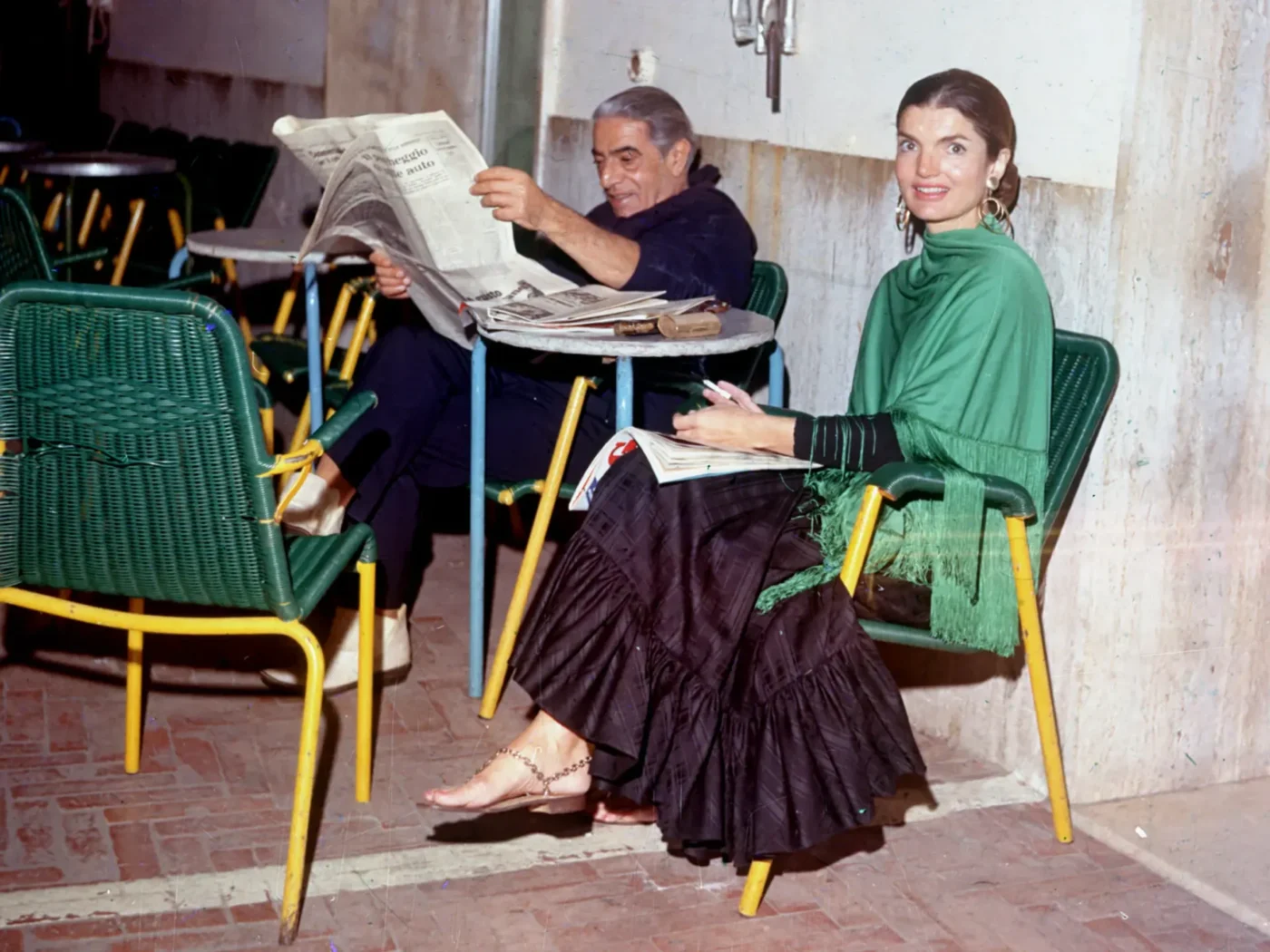What are we talking about when we speak of Made in Italy? Fashion (if you look at the market), food (I would have said), style (foreigners would probably answer). Knowhow and craftsmanship is the answer for Nicolò Milella, whose very job is to discover and select beautiful things for fashion and design magazines, dividing his time between photo shoots and creative consulting. He knows everyone, keeps Milanese fashion PR at bay and, as a hobby, collects porcelain. He’s the kind of guy who hides–behind a child face, blue eyes and blond hair–a wit and knowledge you wouldn’t expect from someone 30-years-old. He flows with confidence, wearing fashionable clothes from top to toe, but with so much understatement that a professional eye is needed to decode every detail. Just true style, no showing off. There’s no one better to talk about Made in Italy beyond the clichés.
Italian craftsmanship is a serious thing indeed, especially today. Until the past century, everything was handcrafted because there was no alternative–whether good or bad, items had to be made by hand. This all changed with industrialization and globalization, faster and faster in the last decades, when we started to produce and buy a thousand things, made badly and in a hurry, designed on purpose to be disposable. Mass craftsmanship disappeared because of consumerism (not because of technology), but niche craftsmanship survived, fueled by the big brands of high fashion and design. By those who choose beauty as a way of life and as a pattern of consumption.
Therefore, in order to look for craftsmanship (the real kind), it is not enough to stroll through the streets of quaint city centers, beguiled by the shop windows of souvenirs and “typical local products”. It’s necessary to go looking back into history and behind the doors of secret workshops. The Italian craftsmanship that everyone wants is not cheap, not trendy, but it is truly original. And very often it’s not what you expect.
To get Nicolò’s secret addresses, I attempt to proceed by city: “Venice?” I ask to start with Murano glass. “Lace and brocades!” he counters. By the third glass of wine at brunch, we will end up talking about porcelain, the silk road… and about turtles.
Along the Silk Route: Venice
In Venice, silkware arrived via Byzantium from China, along the silk route, and developed its unique style thanks to the contribution of weavers from Lucca who arrived in the city of canals in the early 14th century. It’s a fascinating history that can be visited within the walls of the new, must-see Mariano Fortuny Museum, which has just reopened to the public.
Born in Granada in 1871, icon Mariano Fortuny was himself the son of an artist, studied as a painter and moved to Venice at age 18. Here he shifted from painting to set design and stage lighting, inventing the revolutionary cupola system for theaters–now adopted by major theaters throughout Europe. But Mariano Fortuny was always searching out new creative stimuli: he began to produce fabrics and printed textiles. The 1930s would see Fortuny make other innovations like “Tempera Fortuny”, coloured photographic paper. “Between the 19th and 20th centuries, Mariano Fortuny did what Bevilacqua had done in his weaving centuries earlier, but with a process that was innovative in its own way. He began to print with wooden blocks, reproducing the designs of damasks that had previously been made with weft, warp and canvas,” Nicolò explains. “Venice brings with it the charm of the past. Think of Fortuny’s pleats: they are a reference to ancient Greece. Like his lamps–they look like Moroccan lanterns.”
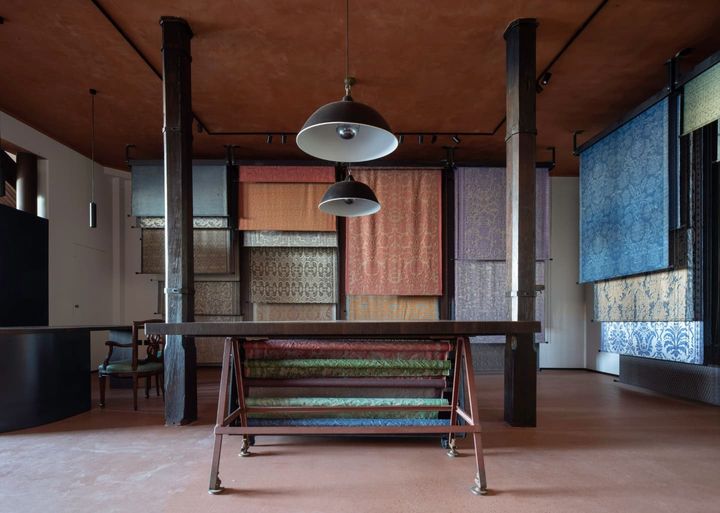
Courtesy of Fortuny; Photography by Alessandra Chemollo
The Innovation Of Porcelain And Glassware
Venice has been a hotbed of innovation and luxury in Italy, thanks to its historic connections with the rest of the world. And in this the history of glass is not dissimilar. While in other countries glassworks sprung up near the places where raw materials or fuel were extracted, Venice and Murano have always had to import everything from afar, except for the master glassmakers, who have been settled in the watery city since the Renaissance. Seguso is one of the oldest glassmaking dynasties on the island of Murano, whose tradition has been handed down since 1397 along 23 generations, and can be visited by appointment, Nicolò explains.
“Venini, the best-known brand, has been around since 1921 and has become famous thanks to the many designers [Vittorio Zecchin, Napoleone Martinuzzi, Tobia and Carlo Scarpa, Ettore Sottsass] they have worked with.” Do they make glasses? I ask, looking for gift ideas. “Chandeliers. Murano glass as a tableware is a recent phenomenon. Before that, beverages were drunk in silver or pewter: glass was very rare. The chandelier was a status symbol, and the number of its arms counted money and therefore power. But today, the best souvenirs are mainly glasses. That’s because Venini started to produce glasses that people could use every day, without stems–easy to carry, more resistant. Venini invented them in the 50’s, but since you can find them just about everywhere now, Venini only makes them to order!” You can, however, buy design versions also from Striulli, a glassworks that opened only 30 years ago and specializes in contemporary glassware.
Nicolò is a porcelain collector, and so we also end up talking about the Venetian kind. The history of Venetian porcelain is short: the ceramics were produced for less than a century during the 18th century–the same years when Meissen porcelain was developing in Germany. It was the dawn of Western production. “The invention of porcelain is Chinese, and European courts fell in love with Ming porcelain in the late 14th century. Europeans only used the maîtrisée technique, as in Venice’s Geminiamo Cozzi factory. He still has an 18th century dish set in his catalog. Called Striche, the plates, cups and bowls are made in stripes, yellow like gold. It looks like it was made in the 1940s–so modern!” Nicolò exclaims.

Courtesy of Seguso
In Search of Opulence: Campania
In the 18th century, however, the royal courts were those of Naples and Palermo–the Kingdom of the Two Sicilies. The real glitz was to be found in the South. “In Campania, they have very high craftsmanship in cotton, linen and cashmere.” In Capri, everyone knows about sandals, such as those made by Canfora, who created them for Jackie Kennedy and Grace Kelly. “The cobblers are still there, but gone are the tailors who made you custom Capri pants in half a day and swimsuits in crochet or cotton.” There are also those who make cashmere like Farella, who weaves his shawls by hand in what was once the textile workshop of the novice nuns in the center of the island.
A few kilometers farther, back on the mainland in Vietri sul Mare, the main street stores display handmade ceramics as souvenirs, but if you don’t want to settle for a small selection, go straight to the source: Solimene’s large factory. Covered in tiles and designed by architect Paolo Soleri, the manufactory is one of the most significant architectures of the 20th century and houses the workshop and the company’s outlet of overstock. “Solimene was born simple, but it is a revival of something classic.” The plates with the little animals are inspired by ancient iconography and are true classics: Solime brought these typical designs to a more contemporary style. Today, they are widespread in restaurants and homes, not just a niche product for Hollywood stars.

Jacqueline Kennedy wearing Canfora sandals
Italian Style and Forgotten Crafts: Sicily
Solimene’s ceramics are part of the Italian style, a bit like the Moors’ heads made famous in the world by Dolce & Gabbana designers: “Everyone talks about the ceramics of Caltagirone, but in Santo Stefano there is a lesser-known but very interesting production. They still use medieval designs, less iconographically Sicilian, but much more like what you can find in Marrakech. And they give you a sense of what the many dominions of Sicily have sedimented.” Byzantines, Arabs, Normans–they all passed through Sicily and they all left something unique, which merged with previous customs and traditions. After centuries, this culture is still here, because in the South, traditions endure longer than in the North, allowing artisanal knowledge to be preserved longer. “In Sicily the concept of the trousseau [the belongings collected for a bride’s wedding] has always existed, and still resists today. Sfilato, princess stitch, filet lace are all things that no one makes anymore or even knows of elsewhere. But there is a company for example, La Tela di Penelope, which still produces these tablecloths, bed sheets and towels by hand and where older women teach young weavers the secrets of the trade.”
These are crafts that young people today hardly want to do, and in fact the disappearance of the professions is the real national alarm: without good tablecloths, the Sunday china and wedding lists, we risk seeing centuries-old knowledge disappear. Nicolo pulls out his phone to show me photos of Marcello Meli, Palermo’s last tartarugaio (tortoiseshell cabinetmaker). A cabinetmaker for generations, he still does everything as his great-great-grandfather would have done, only today he continues the tradition exclusively with restoration of a few very precious antique pieces (you can find him at Via Dante, 294). He has a lot in common with turtles; he is an endangered animal as well. We need to save these artisans, but to do so, it is not enough to protect them like pandas: we need to make them useful. And fortunately, the historical moment seems to have arrived: we are tired of wasting and surrounding ourselves with junk. We want to get back to investing in durable and sustainable objects–made with the knowledge of centuries–as alive as a trousseau or china set.
